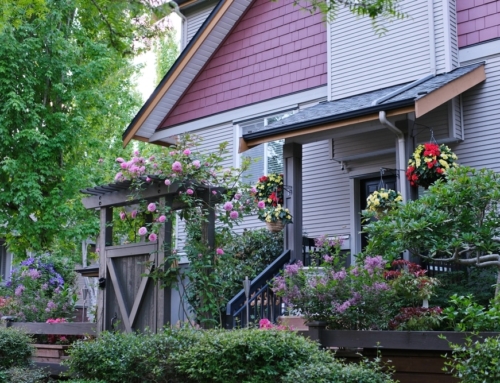Real estate tends to move in cycles throughout the year, and Summer has traditionally been a down time. But you wouldn’t know it from the items that have recently popped up in the mailbag. Here’s a peek at a few items that have recently crossed my desk:
Bob Dole Wants To Save You Money. Although a lot has been said about Republican Presidential candidate Bob Dole’s proposed 15 percent income tax cut, less has been said about his idea to essentially eliminate capital gains tax for homeowners who sell their homes.
According to the Wall Street Journal, Dole has proposed allowing owners to exclude $125,000 ($250,000 for married couples filing jointly) of the gain on a sale of a principal residence. The exclusion would apply to those who used the home as a principal residence for at least three of the five preceding years, though would be prorated for those who moved within three years of purchase. For every year you live in your home beyond 10 years, the exclusion increases by $25,000 each year the home is used as a principal residence, to a maximum of $500,000.
Of course, since the average price of a home in the U.S. is currently under $150,000, it’s the richest homeowners who will reap the maximum benefit under the proposal. Under current tax law, homeowners may delay paying capital gains tax by purchasing a replacement home that costs as much or more within 24 months of the sale of the current residence. Once the homeowners turn 55, they may take a one-time exclusion of $125,000 in capital gains, paying capital gains tax of up to 28 percent on what’s left.
Not So Fast. Homeowners are staying put longer. That’s the conclusion of a recent survey conducted by Chicago Title and Trust, the nation’s largest title insurance company.
The survey reported that the national turnover rate expanded to 12.6 years in 1995, up from 11.8 years in 1994. In other words, the average American home changes ownership once ever 12.6 years. The housing turnover rate is calculated by dividing the total number of owned housing units by the total number of home sales in a given year. The study does not include renters.
Arizona, Nevada, and North Carolina had the fastest turnover rates, with homes changing hands every 6.6 years, 7.1 years, and 7.9 years, respectively. North Carolina had the slowest turnover rate, at 20.4 years.
Historically, the rate has moved up and down, from a high of 19.2 years in 1982 (when interest rates climbed to an all-time high of 18 percent) to a low of 9.3 years in 1977. In the 24 years the survey has been conducted, the average national turnover rate is 12.5 years, or just about where it is today.
Wondering What’s Going To Go Next? What breaks most often in a house? According to a survey compiled by the Home Warranty Association of California, there are twelve mechanical systems or appliances that are generally the first things to need attention: Plumbing, clothes washer or dryer, electrical system, refrigerator, heating systems, hot water heater, dishwasher, oven/range, garbage disposal, inground pool/spa, built-in microwave, and air conditioning.
HWAC also reports that more than 8 of 10 California homes are sold with a home warranty, which warrants that certain appliances and mechanical systems will work for a year from the date of closing, or the warranty company will pay to fix them. That average is far less for the rest of the country. In Illinois, for example, fewer than 10 percent of homes are sold with a home warranty.
Did They Like That House Or Was It The Miles? Want to quickly rack up the bonus miles? Buy a house and get a mortgage from Great Western. Or get a home equity line of credit. You’ll get a 5,000 mile bonus. And, on a $200,000, 30-year loan at 8 percent, you’ll earn more than 55,000 miles.
Of course, you’ll have to pay for the privilege. There’s a $39 annual fee to earn miles on your loan. And, there’s no promise that this will be the cheapest loan on the market, with the best terms available. But what the heck? In four years, two of you can fly to Europe for free. If American hasn’t upped the free miles needed for two coach seats to Europe by then. Or shrunk the number of available seats on each flight.
Finding A New Community. Sometimes finding a home is the easy part. But millions of Americans struggle with finding a new community they can grow to love.
Century 21 has teamed up with America Online to create Century 21 Communities, a comprehensive source of information about communities and neighborhoods in the U.S. and Canada. Currently about 100 communities are online, but don’t expect to find tiny suburbs. Century 21 has chosen the 100 largest cities and towns in the country, though more are expected to be added later.
The system includes national rankings on 358 metropolitan cities nationwide on key quality-of-life factors, such as cost-of-living, education, arts and culture, recreation, health care, crime, housing and jobs. SchoolMatch, an Ohio-based company that provides comprehensive ratings on schools nationwide is linked to the site.
Century 21 Communities is only available to America Online subscribers. SchoolMatch can be reached independently, at http://www.schoolmatch.com.
Published: Aug 19, 1996






Leave A Comment